
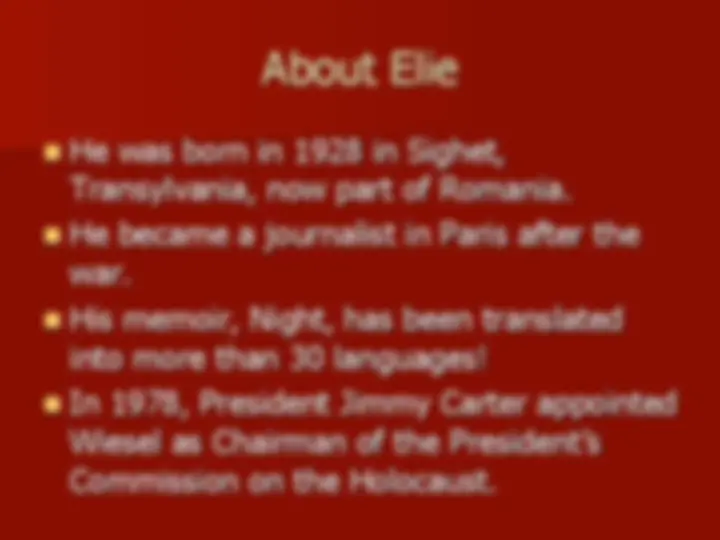

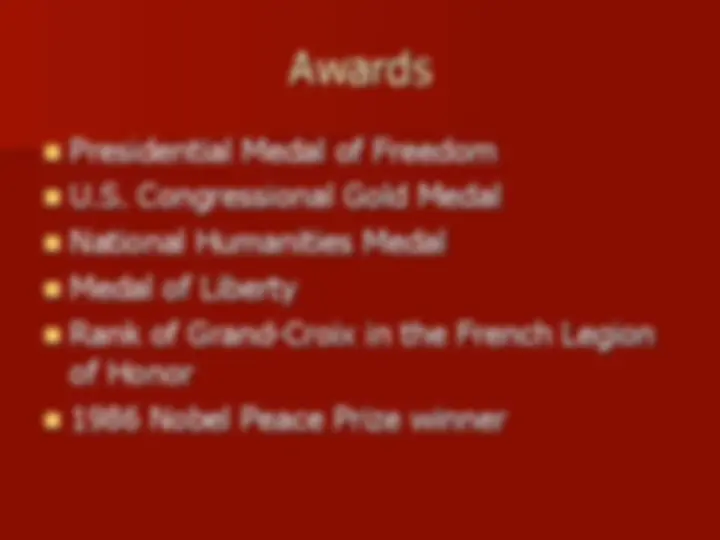
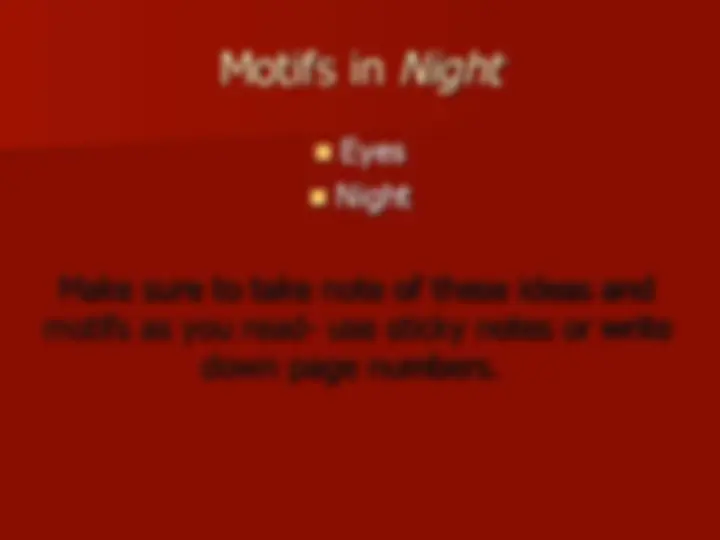
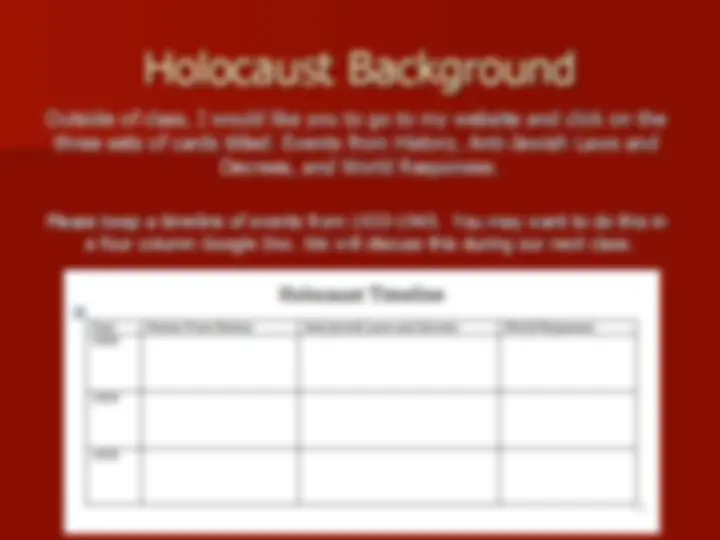
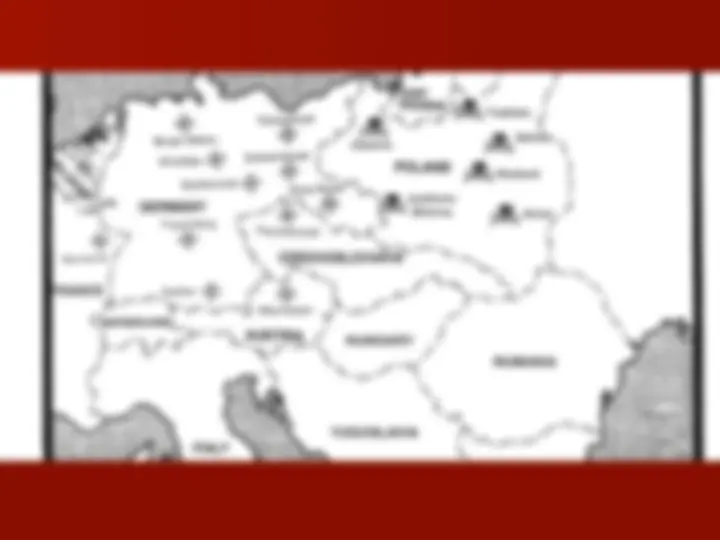
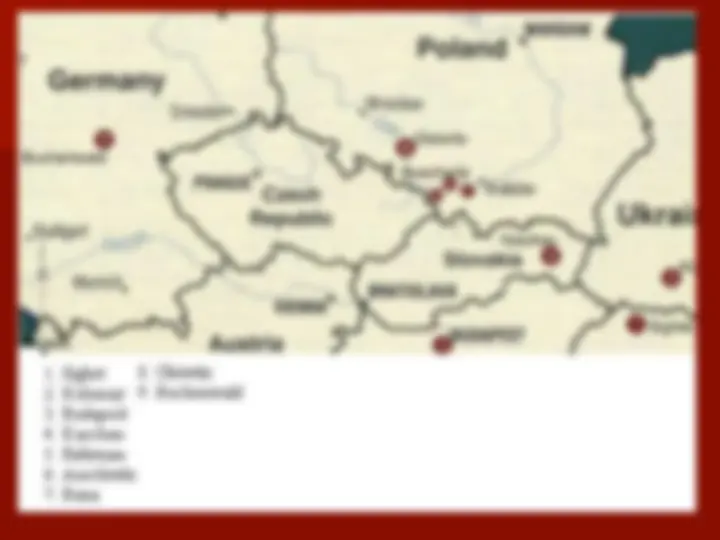
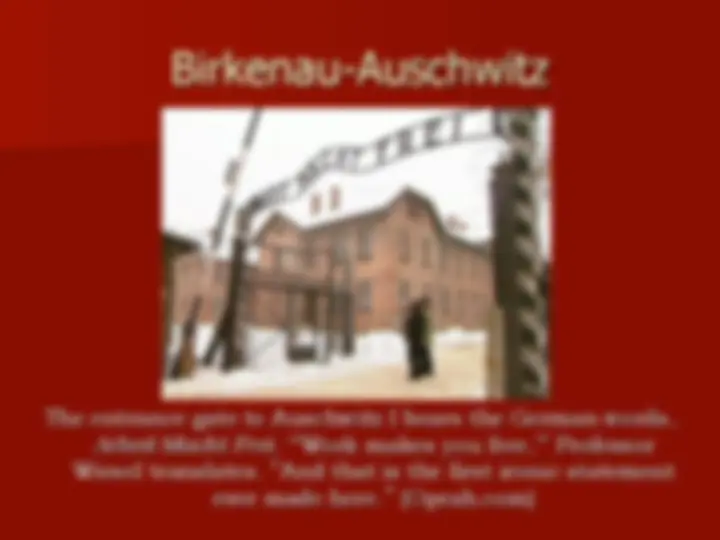
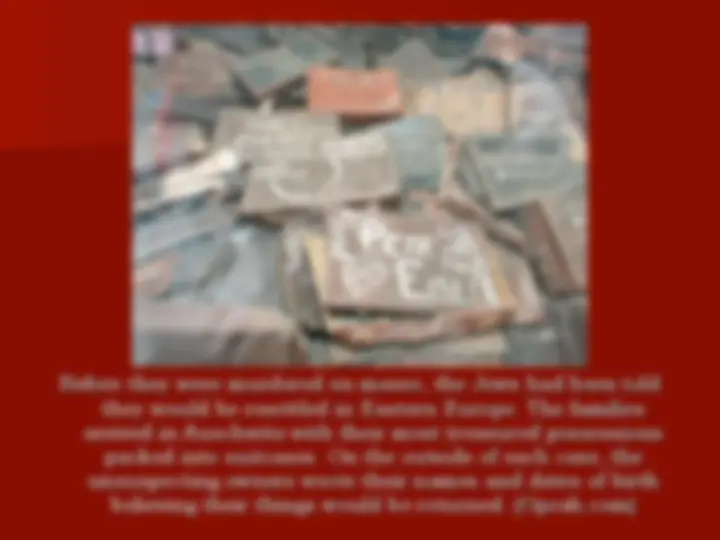
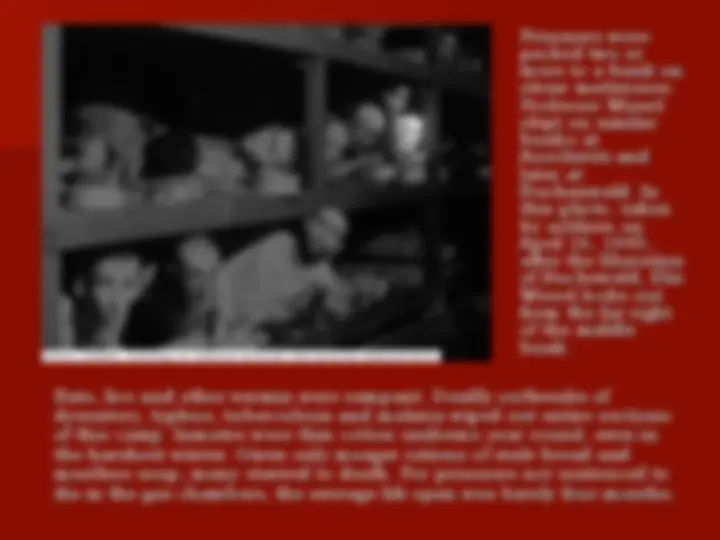


Study with the several resources on Docsity

Earn points by helping other students or get them with a premium plan


Prepare for your exams
Study with the several resources on Docsity

Earn points to download
Earn points by helping other students or get them with a premium plan
Community
Ask the community for help and clear up your study doubts
Discover the best universities in your country according to Docsity users
Free resources
Download our free guides on studying techniques, anxiety management strategies, and thesis advice from Docsity tutors
Night is a memoir written by Elie Wiesel about his experiences as a fifteen-year-old during the Holocaust. Born in Sighet, Transylvania, Wiesel became a journalist in Paris after the war and was appointed Chairman of the President’s Commission on the Holocaust and Founding Chairman of the U.S. Holocaust Memorial Council. He has received numerous awards for his works, including the Nobel Peace Prize in 1986. Themes in Night include death, faith, hatred, survival, perseverance, and loss of innocence. Elie's mission was to promote peace and understanding.
What you will learn
Typology: Slides
1 / 18

This page cannot be seen from the preview
Don't miss anything!











Night
Motifs in Night
Read the Interview Here
The entrance gate to Auschwitz I bears the German words, Arbeit Macht Frei. “‘Work makes you free,’” Professor Wiesel translates. “And that is the first ironic statement ever made here.” (Oprah.com)
The Nazis went to sinister lengths to profit from the extermination of millions, and no possible resource was wasted. Human hair shorn from victims' scalps was gathered and sold to German factories to make cloth. At the time of the camp's liberation in January 1945, seven tons of hair were discovered ready to be transported for sale. In Block 4, mounds of human hair are preserved behind a glass case more than 67 feet long. (Oprah.com)
A case filled with empty Zyklon B cans is a haunting reminder of the poisonous gas used by the Nazis for killing prisoners on a massive scale. "When the gas chambers were full, an SS man put on the gas mask, went to the roof, opened the little window there and threw such a can into the gas chamber," Professor Wiesel explains. "Unspeakable pain and horror—that's how they were killed. Mothers and children hugging. … The death factory became industrialized and industry worked well.“ (Oprah.com)